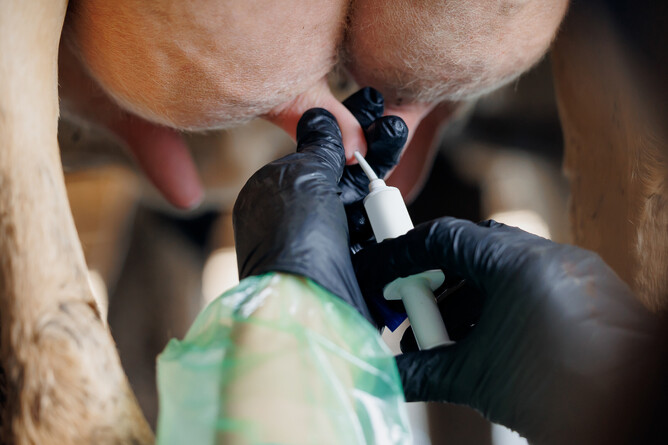Dry cow season is almost upon us. It’s crucial for the udder health of your girls that the correct technique is used when applying dry cow therapy and teat sealant.
It’s a process that requires a high level of sterility and a lot of patience – especially with those heifers!
Here are some instructions for a gold standard approach to drying off each cow, with the aim of preventing mastitis this dry period.
Step 1 – Preparing
Have all your equipment ready before beginning.
This includes: Gloves, teat wipes/meth balls, teat spray, waste buckets, clean water buckets, detergent, and marker spray. Plus the dry cow therapy and teat sealant.
It’s useful having a belt with multiple pockets so you can efficiently handle everything, and limit administration errors. This also helps keep things moving quickly.
Step 2 – Cleaning
Once you are ready to begin and you have a cow or heifer in front of you, it is very important to ensure their teats don’t have any dirt on them for the process.
Starting with a front quarter, hold the base of the teat with your non-dominant and clean the teat with your dominant hand.
Make sure the teat is thoroughly clean, focusing particularly on the tip, where the teat canal is.
Keep your non-dominant hand in place for the duration of this process to keep the teat steady.
Step 3 – Medicating
Gently instil the dry cow therapy into the teat canal, followed by the teat sealant (in some cases you may only be using teat sealant).
You do not need to put the entire end of the medication tube into the canal, just enough to administer all of the medication without loss.
Be very careful to keep the ends of the tubes clean. These should not come into contact with anything before going into the teat canal.
Once the medication is in place, you can release the first teat and repeat steps 2 and 3 on the remaining front quarter and both back quarters of the udder.
Step 4 – Finishing
Use teat spray on all quarters once they are all done.
Good practice is to mark each cow specific to the individual who performed the administering of the medication.
It’s important to maintain great hygiene as you work through the rest of the herd; swapping gloves when necessary, hosing down the shed frequently, and cleaning wet weathers and belts if dirty.
Step 5 – Monitoring
Afterwards, monitor these cows over the short-term to make sure there is no associated illness.
It may feel tedious to follow this process, and it’s tempting to take shortcuts. However, doing this well can help lower your bulk milk somatic cell count next season, prevent mastitis during the dry period, and support the long-term health and longevity of your cows.

